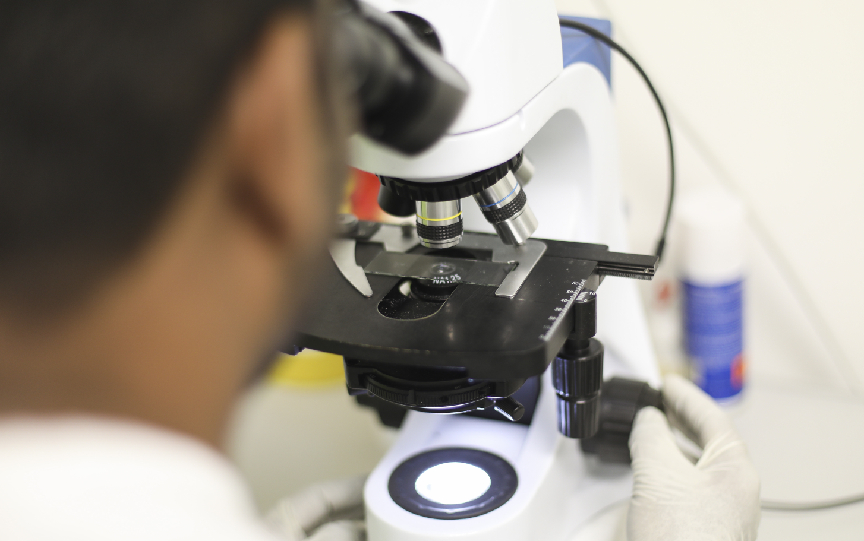Evidence from a humanized mouse model of androgenetic alopecia that platelet-rich plasma (PRP) stimulates hair regrowth, hair shaft diameter and vellus-to-terminal hair reconversion in vivo.
Laufer Britva R et al., Br J Dermatol, 2021
Autologous platelet-rich plasma (PRP) has been increasingly used for androgenetic alopecia (AGA) management in both men and women, with several studies suggesting improved hair regrowth upon PRP treatment. However, it is still unclear how PRP stimulates hair regrowth in AGA affected patients. A team of researchers from the Technion-Israel Institute of Technology, University of Manchester, University of Miami, and Monasterium Laboratory in Münster, Germany, address this question by employing a new version of the humanized AGA mouse model. Transplantation of scalp skin from AGA patients onto immunocompromised mice is the best available preclinical in vivo model for testing new AGA treatments under clinically relevant conditions directly in the AGA-affected human target organ. In this study, the humanized AGA mouse model was further improved by increasing the size of skin transplants and by using SCID instead of nude mice. These refinements allowed to minimize potential confounding influences of the mouse immune system on transplanted human hair follicles.
After transplantation of scalp skin taken from intermediate balding areas of male AGA patients, the mice received once-monthly intradermal autologous, activated PRP injections for four months, while control mice were treated with non-activated PRP. This induced a significantly higher number of visible hair shafts in the xenografts treated with activated PRP than the non-activated PRP controls. Quantitative histological analyses also revealed a significantly increased anagen-to-telogen ratio as well as stimulation of hair matrix keratinocyte proliferation and reduction of apoptosis in the hair bulb in activated PRP-treated AGA scalp skin versus controls. Most importantly, there was also significant reconversion of miniaturized AGA hair follicles to the normal size of terminal hair follicles.
This provides the first definitive preclinical evidence of the efficacy of PRP in human AGA, and documents that our improved humanized AGA mouse model is invaluable for testing novel candidate therapeutics for AGA management.
Human epithelial stem cell survival within their niche requires “tonic” cannabinoid receptor 1-signalling-Lessons from the hair follicle.
Sugawara K et al., Exp Dermatol, 2021
The endocannabinoid system (ECS) plays a crucial role in skin physiology by regulating multiple cellular processes, such as keratinocytes proliferation and apoptosis, sebum production and epidermal barrier maintenance. However, how ECS regulates epithelial stem cell functions remains unclear. A group of scientists from Osaka City University Graduate School of Medicine (Japan), Monasterium Laboratory (Germany), University of Manchester (UK), University of Miami (USA) and University of Hamburg (Germany) teamed up to solve this question. Using a cutting-edge model of organ-cultured human hair follicles (HFs) and mouse genetic studies, the researchers uncovered an unexpected impact of cannabinoid receptor-1 (CB1) activation on the activity of HF stem and progenitor cells. Specifically, they show that CB1 stimulation significantly increases the number and keratin 15 expression of human HF bulge stem cells while inducing apoptosis in their differentiated progeny (CK6+ HF keratinocytes). In contrast, CB1 inhibition led to an apoptosis-driven reduction in the number of human HF stem cells. These results were further confirmed in mice with CB1 gene deletion. Thus, this study clearly highlights the fundamental role of ECS in hair stem cell biology and illustrates the human scalp HF organ culture as a clinically relevant, prototypic model system for studying human stem cells and their controls directly in their native tissue niche.
Can antibiotic-induced changes in the composition of the hair follicle microbiome regulate human hair growth?
Lousada MB et al., Exp Dermatol, 2021
Microbiome-host interaction is increasingly seen as a crucial factor in human skin physiology and cutaneous disorders. While the role of the microbiome in traditional microbial-associated skin diseases is well illustrated, such as acne vulgaris, there is a significant gap in the understanding of how the hair follicle (HF) microbiome and antibiotic-induced dysbiosis impact on human hair growth. A team of scientist from Monasterium Laboratory in Münster (Germany), together with colleagues from Christian-Albrechts University Kiel (Germany), University of Manchester (UK) and University of Miami (USA), conducted a pilot study looking at the human HF microbiome by whole-genome shotgun sequencing.
Using scalp HF organ cultures, the researchers found that two widely used antibiotics, roxithromycin (RXM) and ceftriaxone (CTX), had substantial differences in their effects on the HF microbiome profile. RXM, a macrolide with known hair growth-promoting properties, promoted the growth of certain bacterial species, including Propionibacteriaceae, over Staphylococcus, Dietzia, and Neisseria. Furthermore, RXM treatment tended to stimulate hair shaft production and maintained HFs in the anagen phase ex vivo.
In contrast, CTX impacted organ-cultured human HFs negatively, with a higher microbial load as well as increased tissue fragility and degradation compared to RXM-treated HFs. This study highlights a clear need for future work to understand the impact of antibiotics on hair shaft production, hair cell proliferation and the role of the HF microbiome in these processes. This work also demonstrates the suitability of the human HF organ culture for studying the HF microbiome.
Hair Follicle Chemosensation: TRPM5 Signaling Is Required for Anagen Maintenance.
Mardaryev A et al., J Invest Dermatol, 2021
Transient Receptor Potential (TRP) ion channels are key molecular sensors integrating diverse physical and chemical stimuli and regulating various cellular processes, such as growth, differentiation, immune response, hormone secretion, and play crucial roles in skin biology and diseases. While many TRP channels were identified in different tissues, only three of them, namely TRPV1, TRPV2, TRPV3, were systematically studied for their role in hair growth regulation. A group of researchers from Monasterium Laboratory in Münster (Germany), with colleagues from the University of Manchester (UK), University of Miami (USA) and Mediteknia Skin & Hair Laboratory (Gran Canaria, Spain) have made significant progress in the understanding of TRP channel roles in hair follicle (HF) chemosensation by focusing on TRPM5, which was previously shown to respond to pheromones in mice.
Using scalp hair follicle (HF) organ culture as a well-established preclinical system for studying human hair growth, the team of scientists identified that pharmacological activation of the TRPM5 channel maintained the HFs in the phase of active hair growth (anagen), while both, a TRPM5 inhibitor and TRPM5 gene silencing using siRNA technology, promoted apoptosis-driven HF regression. This research paves the way for the development of cosmeceutical and therapeutic approaches for modulating human hair growth by targeting TRPM5 signaling activity.


